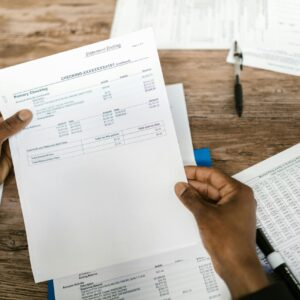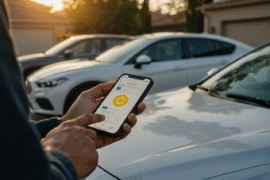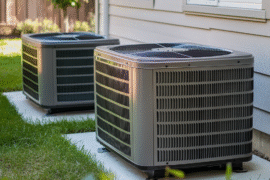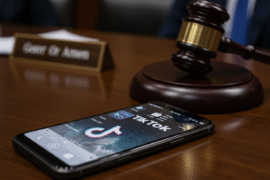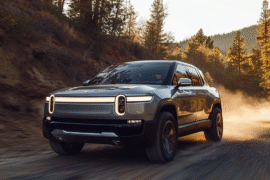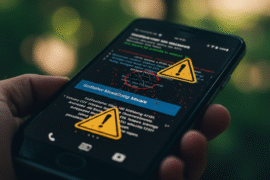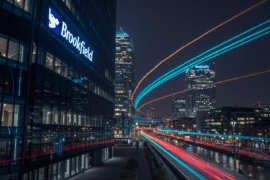This article may contain references to products or services from one or more of our advertisers or partners. We may receive compensation when you click on links to those products or services. Nonetheless, our opinions are our own.
- Key Highlights
- Introduction
- Understanding Tesla Charging Basics
- The Different Types of Tesla Chargers Explained
- How Charging Speed Varies by Charger Type
- Preparing for Your First Charge
- Essential Equipment and Resources Needed
- Setting Up Your Home Charging Station
- Step-by-Step Guide to Charging Your Tesla
- Cost Factors Influencing Tesla Charging in the U.S.
- The Impact of Peak Hours on Charging Costs
- Analyzing the Cost to Charge at Home vs. Public Charging Stations
- Long-Term Savings: Charging a Tesla Compared to Gasoline Costs
- Conclusion
- Frequently Asked Questions
- Recommended Reads
Key Highlights
The cost of charging a Tesla in 2025 depends on several factors, including electricity prices, where you charge (at home or at a public station), and the Tesla model you own. Charging at home is usually the cheapest option, especially if you charge during off-peak hours. Tesla Superchargers offer fast charging for long journeys, but using them can be more expensive than charging at home. Installing solar panels can help reduce your charging costs by using renewable energy. Understanding your driving habits and electricity costs will help you find the best times to charge and save money.
Introduction
As electric vehicles, like the Tesla Model Y, continue to gain popularity, it’s important to understand how much it costs to charge. The growing number of charging stations and improvements in battery technology have made owning a Tesla easier and more affordable. This guide will explore the factors that affect Tesla charging costs and provide helpful tips to enhance your electric vehicle experience.
Understanding Tesla Charging Basics
Tesla cars are known for their smart technology and firm performance. Their EV charging system is easy to use and efficient. The time it takes to charge your Tesla depends on the battery capacity of your model, which varies by vehicle. Many Tesla models offer a range of over 300 miles on a single charge, making long trips more convenient.
Several factors can affect both the time to charge and the total cost, including the type of charger you use and external conditions like the weather. By understanding Tesla charging, you can make smarter choices about where and when to charge, saving both time and money.
The Different Types of Tesla Chargers Explained
Tesla offers several options for charging your car through its extensive network of chargers. If you travel often, Superchargers are a great choice. These chargers are part of Tesla’s network and provide fast charging, ideal for long-distance travel. A Tesla Model S, for example, can gain up to 200 miles of range in just 15 minutes when using a Supercharger.
Another option is the Wall Connector, which is designed for home use. It charges your Tesla faster than a standard outlet, making it an excellent choice for overnight charging.
Finally, the Mobile Connector comes with every Tesla and is useful when a Wall Connector isn’t available. You can plug it into regular household outlets, but this method is slower and takes more time.
How Charging Speed Varies by Charger Type
Understanding how quickly different Tesla chargers work is essential, as it affects both the time to charge and the cost, especially when using public chargers. Fast chargers like Tesla’s Superchargers use DC power, enabling quicker charging. This makes them ideal for long trips, reducing your waiting time.
For instance, the Tesla Model Y, which comes with a 75 kWh battery, can charge to 80% in about 30 minutes using a Supercharger.
AC charging, typically done at home or through regular outlets, is slower because the car has to convert AC power into DC power. While it’s slower, home charging is often more affordable, especially if you charge during off-peak hours.
Preparing for Your First Charge
Driving an electric vehicle is an exciting experience, especially with a new Tesla. However, it’s crucial to understand the basics of charging. Tesla owners can use Tesla’s large charging network or purchase their charging equipment for added convenience.
It’s also essential to ensure a safe connection when charging. This knowledge will help make the transition to EV ownership smoother and more enjoyable.
Essential Equipment and Resources Needed
Before charging your Tesla for the first time, you’ll need the right tools. Every Tesla comes with a Mobile Connector, which allows you to plug into various outlets, such as standard home outlets or Tesla Wall Connectors.
Consider investing in a Tesla Wall Connector if you want faster home charging. It connects directly to your home’s electrical system and charges your Tesla much faster than a standard outlet. This option is especially beneficial for frequent chargers, like those with a Model X Plaid.
The Tesla app is also vital for monitoring your car’s charging status. It helps you find nearby Superchargers and gives you control over several vehicle functions.
Setting Up Your Home Charging Station
Installing a home charging station is a convenient way to keep your Tesla ready for the road. Tesla recommends using the Wall Connector for optimal results. It works well with all Tesla models and is the best option for home charging.
You should hire a qualified electrician to install the Wall Connector, ensuring it is compatible with your home’s electrical system. A professional installation will guarantee safety and reliability.
Choosing the right location for your charging station is important. A garage or driveway is typically ideal, providing easy access and tidying the area.
Step-by-Step Guide to Charging Your Tesla
Charging your Tesla is simple. You can either use Tesla’s Supercharger network or other public charging stations. Tesla Superchargers are fast and are located in many places, making them a great option for long trips.
To use a Supercharger, simply connect your car to the station, and it will begin charging automatically. The payment process is integrated into your Tesla account. For regular AC charging, just plug your Tesla into a charging station using the cable with your car.
Step 1: Connecting Your Tesla to a Charging Station
Connecting your Tesla is straightforward. When using a Supercharger, charging starts as soon as you plug in. The station communicates with your car, checks your account, and begins charging.
You may need to start the process at public charging stations via an app or RFID card. Once you’ve initiated the process, plug the charging cable into your car’s charging port (located above the rear wheel on the driver’s side of the Model Y).
Before charging, check your car’s battery status on the screen, showing how long the charge will take. Charging speed can vary based on the charger’s power and your battery level.
Step 2: Monitoring Charging Progress and Understanding Notifications
You can monitor your Tesla’s charging progress in several ways. The Tesla mobile app updates your car’s charging status, even when you’re not near the vehicle. You can also check your car’s touchscreen, showing the charging speed, time remaining, and battery percentage.
Your Tesla will notify you when it reaches the charging limit. You’ll receive alerts on your phone if there are any issues, such as a power outage or an unplugged cable. Once your Tesla is fully charged, it will notify you through the car’s display and the mobile app.
Cost Factors Influencing Tesla Charging in the U.S.
Several factors influence the cost of charging your Tesla in the U.S. One of the main factors is the varying electricity prices across states. Different states have their regulations, which affect the cost per kilowatt-hour (kWh). Therefore, your location can significantly impact how much it costs to charge your Tesla.
Charging costs can also vary depending on the time of day. Many utility companies offer time-of-use (TOU) plans, which reward you for charging during off-peak hours, such as at night. Off-peak hours typically come with lower kWh prices.
The Impact of Peak Hours on Charging Costs
Many utility companies use time-of-use (TOU) pricing, meaning the electricity cost varies throughout the day. During peak hours—typically late afternoon and early evening—electricity prices are higher due to increased demand. To save money, try to charge your Tesla during off-peak hours, when prices are lower, usually at night or on weekends.
Charging during off-peak hours can significantly reduce your overall charging costs.
Analyzing the Cost to Charge at Home vs. Public Charging Stations
When comparing charging costs, home charging is generally the most affordable. Charging at home is convenient, especially since you can do it overnight. However, public charging stations, like Tesla Superchargers, offer more flexibility when driving.
Charging costs depend on several factors, including electricity prices, how fast you can charge, and the fees at public stations.
Long-Term Savings: Charging a Tesla Compared to Gasoline Costs
Switching to a Tesla from a gasoline-powered vehicle can result in significant long-term savings. Tesla owners save on fuel costs, maintenance, and other factors related to traditional combustion engines.
By charging at home, especially during off-peak hours or with solar panels, you’ll pay much less than you would for gasoline over time. Additionally, Tesla’s low maintenance costs mean you won’t have to worry about oil changes, spark plugs, or exhaust systems.
Conclusion
Charging your Tesla in 2025 is straightforward and cost-effective if you understand your options. Whether you charge at home, use Superchargers, or take advantage of solar power, you can reduce your overall charging costs in many ways. Choosing the right equipment, charging times, and locations can make your Tesla ownership experience more efficient and economical.
Frequently Asked Questions
How Long Does It Take to Fully Charge a Tesla?
The time it takes to fully charge your Tesla depends on the charger you use and the size of your battery.
- Superchargers: Using Tesla’s Supercharger network, you can charge up to 200 miles in about 15 minutes, and it usually takes 30-60 minutes to get an 80% charge, depending on the model and battery size.
- Wall Connector: At home, using a Tesla Wall Connector, it can take around 6-8 hours to fully charge most Tesla models overnight.
- Mobile Connector: Charging from a standard household outlet (120V) can take much longer—up to 24 hours or more for a full charge, depending on the battery size.
Can I Charge My Tesla at Non-Tesla Charging Stations?
You can charge your Tesla at non-Tesla charging stations, but you’ll need an adapter. Tesla vehicles come with a Mobile Connector that includes an adapter for standard outlets. Still, if you want to use third-party charging networks like Electrify America or EVgo, you’ll need a CHAdeMO or CCS adapter, depending on the station’s connector type.
Most Tesla models are compatible with a range of non-Tesla stations, but charging speeds and pricing can vary. Always check compatibility before using a third-party charger.
Does Cold Weather Affect Tesla Charging?
Yes, cold weather can affect your Tesla’s charging performance and efficiency. When temperatures drop, the battery’s chemical reactions slow down, leading to longer charging times. Tesla vehicles have a built-in thermal management system to help protect the battery and optimize charging in cold conditions. However, it may still take longer to charge in extreme temperatures.
To reduce the impact of cold weather, you can precondition your Tesla by remotely heating the battery via the Tesla app before charging. This can help improve charging times in colder climates.

Reviewed and edited by Albert Fang.
See a typo or want to suggest an edit/revision to the content? Use the contact us form to provide feedback.
At FangWallet, we value editorial integrity and open collaboration in curating quality content for readers to enjoy. Much appreciated for the assist.
Did you like our article and find it insightful? We encourage sharing the article link with family and friends to benefit as well - better yet, sharing on social media. Thank you for the support! 🍉
Article Title: Tesla Charging Costs in 2025: What to Expect
https://fangwallet.com/2024/12/12/tesla-charging-costs/The FangWallet Promise
FangWallet is an editorially independent resource - founded on breaking down challenging financial concepts for anyone to understand since 2014. While we adhere to editorial integrity, note that this post may contain references to products from our partners.
The FangWallet promise is always to have your best interest in mind and be transparent and honest about the financial picture.
Become an Insider
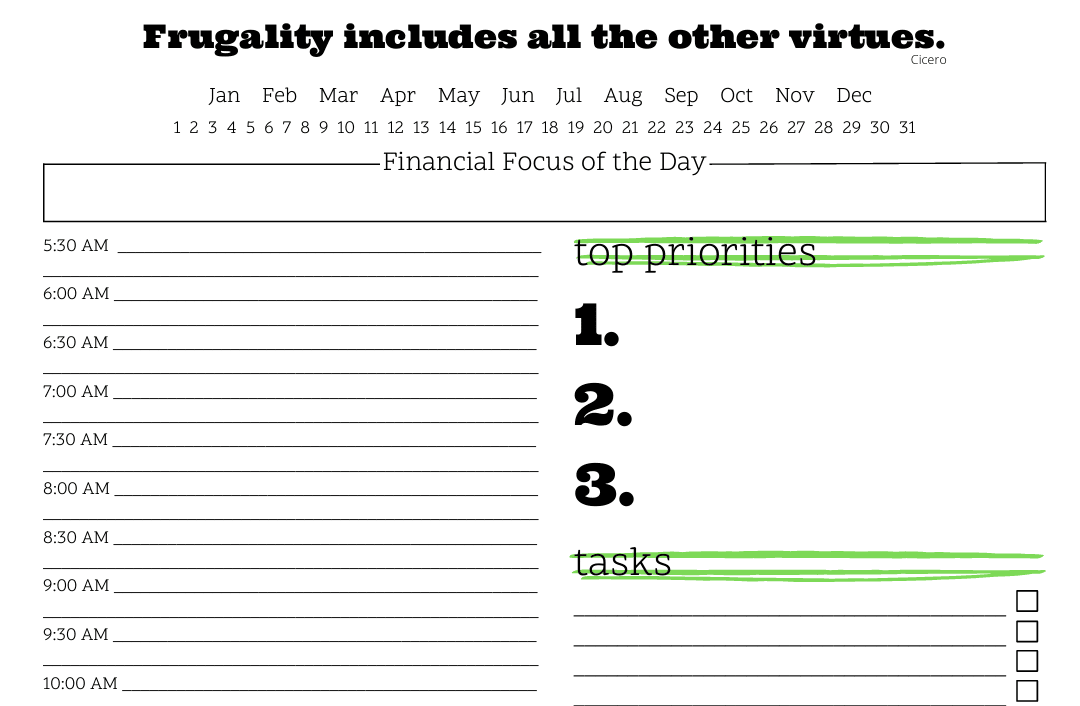
Subscribe to get a free daily budget planner printable to help get your money on track!
Make passive money the right way. No spam.
Editorial Disclaimer: The editorial content on this page is not provided by any of the companies mentioned. The opinions expressed here are the author's alone.
The content of this website is for informational purposes only and does not represent investment advice, or an offer or solicitation to buy or sell any security, investment, or product. Investors are encouraged to do their own due diligence, and, if necessary, consult professional advising before making any investment decisions. Investing involves a high degree of risk, and financial losses may occur including the potential loss of principal.
Source Citation References:
+ Inspo


